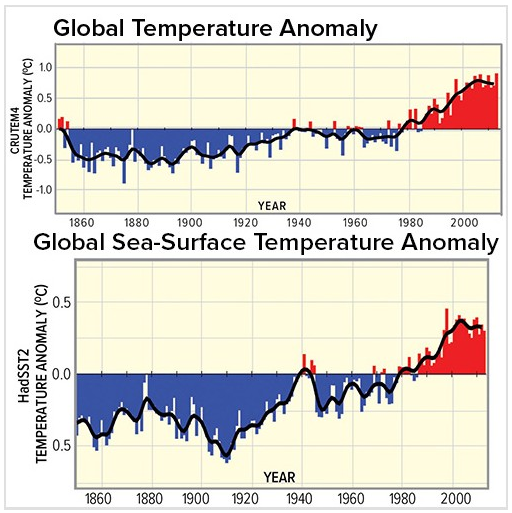Nearly all large optical telescopes built today are ________
A) reflectors
B) radio
C) refractors
Ans: A) reflectors
You might also like to view...
Both sea surface (below) and air temperature (above) show a warming period beginning in

A) 1860.
B) 1940.
C) 1980.
D) 2010.
What is the Mohs hardness of ice?
A) 0.15 B) 0.5 C) 1.5 D) 15.0
Pyroclastic flows primarily contain pumice, vesicular pyroclastic material, and ________
A) volcanic mudslides called lahars B) a cloud of low-density hot expanding gases C) low viscosity lava flows D) ultramafic rock debris
Use the following scenario:Your friend is upset because his conception of what a species has been challenged. His professor told him that there are some problems associated with the common way that a species is identified. Your friend learned what a species was while in high school and it was reinforced during his first year in college. He also refers to the third chapter in your environmental science book for this definition. Your friend wonders if this professor knows what she is talking about. You explain to him that there really are some problems associated with the common way that a species is defined and you think that this professor is correct.You also mentioned to your friend that a new tool, DNA sequencing technology, is radically changing the way species are identified. In fact,
some groups that were originally thought to be far apart now seem to be closely related. Which of the following statements does not reflect the implications of using this new tool? A. This tool will end the debate of what is or is not a species B. This tool allows us to see how closely related species are in terms of their genetics C. This tool helps us judge genetic diversity D. This tool helps us better understand molecular evolution E. This tool helps us better understand how species actually originate